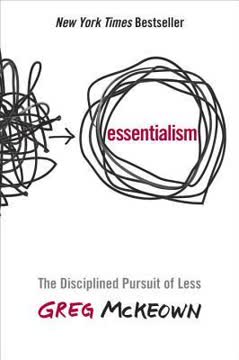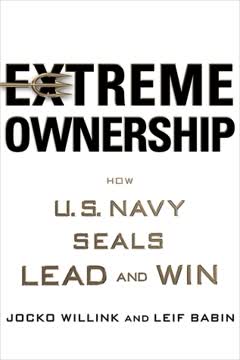Key Takeaways
1. The Productive Lazy Project Manager: Work Smarter, Not Harder
"Lazy does not mean stupid."
Smart laziness. The concept of productive laziness combines intelligence with a focused approach to project management. It's about exercising efforts where they truly matter, rather than rushing around involving oneself in non-critical activities. This approach allows project managers to balance life, projects, and work effectively.
Key principles:
- Focus on the 20% of tasks that produce 80% of results
- Delegate and empower team members
- Streamline communication and processes
- Anticipate and plan for potential issues
By adopting these principles, project managers can achieve success with less effort, ensuring projects are delivered on time and within budget while maintaining a healthy work-life balance.
2. The 80/20 Rule: Focus on What Truly Matters
"The Pareto principle or 80/20 rule can and should be used by every smart but lazy person in their daily life."
Pareto principle applied. The 80/20 rule, also known as the Pareto principle, states that 80% of consequences stem from 20% of causes. In project management, this translates to focusing on the critical 20% of tasks that yield 80% of the results.
Application in project management:
- Identify and prioritize high-impact activities
- Allocate resources efficiently
- Streamline decision-making processes
- Minimize time spent on low-value tasks
By applying this principle, project managers can maximize their productivity and project outcomes while minimizing unnecessary effort and resource allocation.
3. Project Lifecycle: Thick at the Ends, Thin in the Middle
"All projects are thick at one end, much, much thinner in the middle and then thick again at the far end."
Strategic effort allocation. This concept emphasizes that project managers should apply more effort and focus at the beginning and end of a project, while allowing the middle phase to run more smoothly with less direct involvement.
Project phases and effort distribution:
- Initiation (Thick): Intensive planning, team building, and setting clear objectives
- Execution (Thin): Empowering the team, monitoring progress, and addressing issues as needed
- Closure (Thick): Thorough evaluation, knowledge transfer, and lessons learned
By following this approach, project managers can ensure a strong foundation, smooth execution, and valuable insights for future projects, all while optimizing their own time and energy.
4. Manage Your Sponsor: Understand Their Expectations and Power
"Critical to any project's success is having a good project sponsor, but, like the saying goes 'you can pick your friends but you can't pick your relatives' – and the same is true of project sponsors."
Sponsor management strategy. Understanding and managing your project sponsor is crucial for project success. This involves assessing their expectations, power base, and communication preferences to tailor your approach accordingly.
Key steps in sponsor management:
- Conduct an initial meeting to clarify expectations and objectives
- Analyze their power and influence using the power grid
- Identify their motivations and "what's in it for them"
- Adapt your communication style to suit their preferences
- Regularly update and engage them throughout the project lifecycle
By effectively managing your sponsor, you can secure necessary support, resources, and decision-making authority to drive your project to success.
5. Control Project Creep: Measure, Manage, and Park Change
"Project creep (as in functionality creep, feature creep, mission creep and scope creep) is a problem where the objectives of the project are put at risk by a gradual increase in overall objectives as the project progresses."
Change management tactics. Controlling project creep is essential for maintaining project scope, timeline, and budget. This involves implementing a robust change management process and fostering a culture of controlled flexibility.
Strategies to manage project creep:
- Implement a clear change control process
- Use the "creep'o'meter" to assess team members' tendencies for scope creep
- Educate the team on the importance of scope management
- Create a "parking lot" for ideas that don't fit the current scope
- Regularly review and prioritize change requests
- Thank contributors for their ideas, even if they're not implemented
By effectively managing project creep, you can maintain focus on core objectives while still allowing for necessary adaptations and improvements.
6. Effective Communication: Tailor Your Approach
"Effective communication is about isolating the critical information, utilising the optimum communication method for the person (or people) that you need to communicate with, and delivering that information at the appropriate time."
Tailored communication strategies. Effective project communication involves understanding your audience, choosing the right medium, and delivering information at the right time. This approach minimizes misunderstandings and ensures that critical information reaches the right people.
Key communication principles:
- Understand individual communication preferences
- Develop a clear communication plan
- Use a mix of communication methods (e.g., email, meetings, reports)
- Focus on delivering critical information concisely
- Encourage two-way communication and feedback
- Regularly assess and adjust communication strategies
By tailoring your communication approach, you can improve project clarity, team alignment, and overall project success.
7. Fun and Team Building: Create a Positive Project Environment
"Without a little bit of fun in every project, the project world can be a dark and depressing place."
Fostering team spirit. Incorporating fun and team-building activities into your project can significantly improve team morale, productivity, and overall project success. A positive environment helps team members navigate challenges and maintain motivation throughout the project lifecycle.
Ideas for incorporating fun:
- Start meetings with icebreakers or jokes
- Organize team-building activities or social events
- Celebrate project milestones and team achievements
- Encourage friendly competition or challenges
- Create project-specific traditions or rituals
- Use humor to diffuse tense situations (when appropriate)
Remember to keep activities inclusive and respectful of all team members. By fostering a fun and positive project environment, you can enhance team cohesion, creativity, and overall project performance.
8. Stay Calm in Crisis: Filter, Delegate, and Prioritize
"Breathe normally."
Crisis management approach. Staying calm during project crises is crucial for effective problem-solving and leadership. By adopting a systematic approach to crisis management, project managers can navigate challenges more effectively and maintain team confidence.
Crisis management steps:
- Breathe and stay calm
- Filter: Identify the core issues and their sources
- Delegate: Assign tasks to appropriate team members
- Prioritize: Focus on high-impact actions first
- Monitor: Keep track of progress and adjust as needed
By following this approach, project managers can maintain control during challenging situations, make better decisions, and guide their teams towards successful resolutions.
9. Cultivate Team Love: Nurture the Feel-Good Factor
"A little love goes a long way and a lot of love goes much further."
Team nurturing strategies. Creating a positive team environment where members feel valued and supported is crucial for project success. This involves understanding individual needs, fostering a sense of belonging, and providing appropriate recognition and support.
Ways to cultivate team love:
- Understand each team member's motivations and preferences
- Provide regular, meaningful feedback and recognition
- Foster a culture of trust and open communication
- Encourage professional development and growth opportunities
- Celebrate team and individual successes
- Address conflicts and issues promptly and fairly
By nurturing your team and creating a positive work environment, you can enhance motivation, productivity, and overall project success.
10. Controlled Accessibility: Balance Availability with Productivity
"Being there when you are really needed and being there all the time are very different things indeed."
Managed availability. Balancing accessibility with productivity is crucial for effective project management. While being available to your team is important, constant interruptions can hinder productivity and decision-making.
Strategies for controlled accessibility:
- Establish clear communication channels and protocols
- Set specific "office hours" for open-door policy
- Use delegation effectively to empower team members
- Implement a system for prioritizing requests and issues
- Educate team members on when and how to escalate concerns
- Regularly review and adjust your accessibility approach
By implementing controlled accessibility, project managers can maintain team support while preserving time for critical tasks and decision-making.
11. Project Closure: Learn from the Missing Links
"Lessons learned should be lessons shared, so don't be mean, share it out!"
Knowledge capture and transfer. Proper project closure involves more than just delivering the final product. It's an opportunity to capture valuable insights, learn from experiences, and improve future project performance.
Key steps in effective project closure:
- Conduct a thorough project retrospective
- Identify what you know, don't know, and didn't know you didn't know
- Document lessons learned and best practices
- Share insights with team members and stakeholders
- Incorporate learnings into future project planning and processes
- Celebrate project achievements and team contributions
By dedicating time and effort to proper project closure, you can enhance organizational knowledge, improve future project performance, and foster a culture of continuous learning and improvement.
Last updated:
FAQ
What's "The Lazy Project Manager" about?
- Overview: "The Lazy Project Manager" by Peter Taylor is about achieving project management success with less effort by focusing on what truly matters.
- Productive Laziness: The book introduces the concept of "productive laziness," which involves working smarter, not harder, by prioritizing tasks that yield the most significant results.
- Project Management Approach: It offers a unique perspective on project management, emphasizing efficiency and effectiveness over busyness.
- Practical Advice: The book provides practical tips and techniques for managing projects efficiently while maintaining a healthy work-life balance.
Why should I read "The Lazy Project Manager"?
- Efficiency Focus: It teaches you how to be more efficient in your project management tasks, allowing you to achieve more with less effort.
- Work-Life Balance: The book emphasizes the importance of maintaining a balance between work and personal life, which is crucial for long-term success.
- Unique Perspective: Peter Taylor offers a refreshing take on project management that challenges traditional methods and encourages a more relaxed approach.
- Practical Tips: You'll gain actionable insights and strategies that can be applied immediately to improve your project management skills.
What are the key takeaways of "The Lazy Project Manager"?
- Pareto Principle: Focus on the 20% of tasks that deliver 80% of the results to maximize productivity.
- Smart Laziness: Being lazy in a smart way can lead to better leadership and project outcomes.
- Project Phases: Projects are "thick at one end, thin in the middle, and thick again at the far end," meaning effort should be concentrated at the start and end.
- Communication and Team Management: Effective communication and understanding team dynamics are crucial for project success.
How does Peter Taylor define "productive laziness"?
- Focused Effort: Productive laziness is about focusing your efforts where they matter most, rather than being busy with non-critical tasks.
- Efficiency Over Busyness: It emphasizes working smarter, not harder, by prioritizing tasks that yield the most significant results.
- Balance: The concept encourages a balanced approach to work, ensuring that both projects and personal life are successful.
- Strategic Laziness: It involves strategic decision-making to minimize unnecessary work and maximize impact.
What is the "dinosaur theory" in "The Lazy Project Manager"?
- Project Structure: The dinosaur theory suggests that projects are "thick at one end, much, much thinner in the middle, and then thick again at the far end."
- Effort Allocation: This means that project managers should focus their efforts at the critical stages of a project, particularly at the start and finish.
- Delegation: During the middle phase, other team members should handle most of the work, allowing the project manager to take a step back.
- Strategic Management: This approach helps in managing resources effectively and ensuring project success with less stress.
How does "The Lazy Project Manager" apply the Pareto Principle?
- 80/20 Rule: The book applies the Pareto Principle by suggesting that 80% of results come from 20% of efforts.
- Task Prioritization: Project managers should identify and focus on the tasks that will have the most significant impact on the project's success.
- Resource Allocation: By concentrating on the critical 20%, managers can optimize resource use and improve efficiency.
- Decision-Making: This principle guides decision-making processes, ensuring that efforts are directed towards high-value activities.
What are some practical tips from "The Lazy Project Manager"?
- Start Strong: Begin projects with a clear plan and establish authority to set the tone for success.
- Manage Sponsors: Understand and manage project sponsors effectively to ensure their support and alignment with project goals.
- Control Scope Creep: Implement a robust change control process to manage and minimize scope creep.
- Effective Communication: Tailor communication methods to suit individual needs and ensure clarity and understanding.
What is the "intelligence of laziness" according to Peter Taylor?
- Smart Leadership: The intelligence of laziness combines laziness with intelligence, making it ideal for leadership roles.
- Prussian Army Example: The book references the Prussian Army's categorization of officers, highlighting that smart lazy individuals are best suited for command.
- Efficient Problem Solving: Smart lazy people find the easiest and most efficient ways to achieve goals.
- Leadership Edge: This approach gives individuals an edge in leadership by focusing on strategic decision-making and resource optimization.
How does "The Lazy Project Manager" suggest handling communication?
- Tailored Communication: Understand how each team member prefers to communicate and adjust your style accordingly.
- Honesty and Openness: Be honest and open in all communications to build trust and ensure clarity.
- Minimal but Effective: Focus on delivering essential information effectively rather than overwhelming with excessive details.
- Modern Tools: Utilize modern communication tools wisely, balancing speed and clarity to avoid misunderstandings.
What are the best quotes from "The Lazy Project Manager" and what do they mean?
- "Lazy does not mean stupid." This quote emphasizes that being lazy strategically can lead to smarter work and better results.
- "80% of success is showing up." While attributed to Woody Allen, the book challenges this by highlighting the importance of focusing on the critical 20% of tasks.
- "Whenever there is a hard job to be done I assign it to a lazy man; he is sure to find an easy way of doing it." This quote by Walter Chrysler underscores the value of finding efficient solutions.
- "Breathe normally." A reminder to stay calm and composed in crisis situations, allowing for better decision-making.
How can "The Lazy Project Manager" improve work-life balance?
- Efficient Work Practices: By focusing on high-impact tasks, you can achieve more in less time, freeing up personal time.
- Stress Reduction: The book's strategies help reduce stress by minimizing unnecessary work and focusing on what truly matters.
- Balanced Approach: It encourages a balanced approach to work, ensuring that both professional and personal life are successful.
- Time Management: Effective time management techniques allow for more leisure and relaxation, contributing to a healthier work-life balance.
What is the ultimate takeaway from "The Lazy Project Manager"?
- Work Smarter, Not Harder: The core message is to focus on efficiency and effectiveness rather than busyness.
- Strategic Laziness: Embrace strategic laziness to optimize resources and achieve better project outcomes.
- Balanced Success: Achieve success in both projects and personal life by applying the principles of productive laziness.
- Continuous Learning: Always seek to learn from each project to improve future performance and maintain a relaxed, productive approach.
Review Summary
The Lazy Project Manager receives mixed reviews, with ratings ranging from 1 to 5 stars. Readers appreciate its easy-to-read style, practical advice, and focus on efficiency. Many find the book's emphasis on the 80/20 principle and productive laziness helpful. However, some critics argue that the content is too basic for experienced project managers and lacks depth. The book's informal tone and anecdotal approach are praised by some but criticized by others. Several reviewers note issues with translations and suggest the book could be condensed into a shorter format.
Similar Books
Download PDF
Download EPUB
.epub digital book format is ideal for reading ebooks on phones, tablets, and e-readers.











